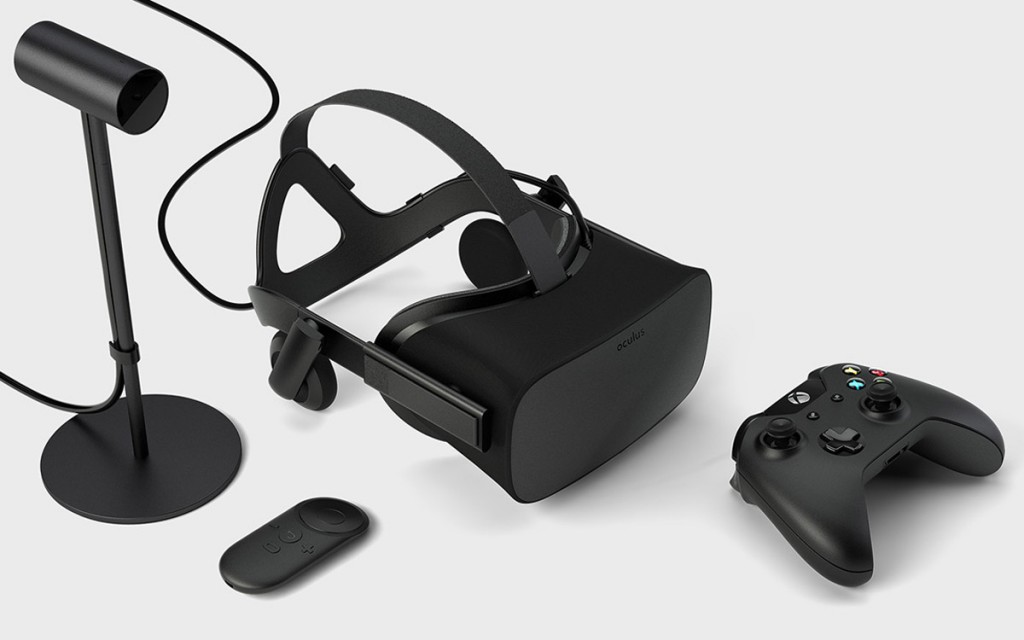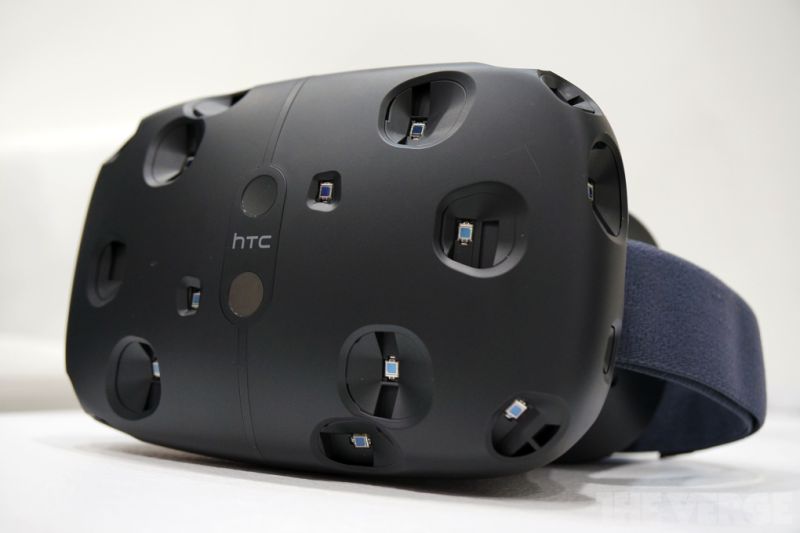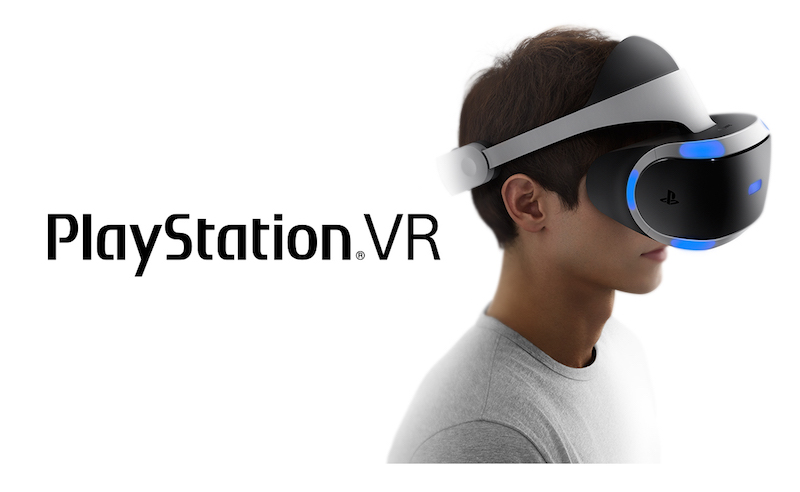Once upon a time the Oculus Rift CV1 was meant to ship to both Kickstarter backers and pre-orderers at the very end of March. Unfortunately, all manner of issues (delays in manufacturing being the key factor) ensured that the vast majority of folks did not receive their virtual reality headset of choice on time. My original estimated launch window of the very first batch was delayed into May. Luckily, that means my headset is finally here. It’s a little odd to survey my desk and find the Rift simply sitting there in the corner. In many ways it feels as though this product is still not out yet – that it’s just a figment of my futuristic imagination.
That’s not the case, of course. The Oculus Rift is undeniably out there and has occasionally even trickled into stores. At this point the orders are getting caught up and that means many more folks are poised to experience virtual reality soon. So what is this new landscape like for gaming and media? It feels a lot like a tenuous first step (even though I’m aware virtual reality headsets have been around for a good long while now). Aside from the meager Rift software and sketchy business choices, the headset itself simply is not as incredible as imagined. But how could it be? It’s like how the scariest horror movies are the ones which never directly show you a monster. The human mind is far more capable of imagining at a much higher capacity than pretty much anything else.
It’s super easy to imagine something far greater than what the Oculus Rift actually is at this point.
As far as headsets are concerned, it’s super easy to imagine something far greater than what the Oculus Rift actually is at this point. The same holds true for each of the other head mounted displays. I’m going to level with everyone right now and confirm that I am not virtual reality professional or even super aware of all the tech going on behind the scenes. Beyond basic resolution specs and such I’m absolutely not a tech guy in this realm. Yet, I have now played enough of the HTC Vive, upcoming PlayStation VR, and Gear VR to have a feel for which headset really wows me personally. Given that there are already highly technical posts online pointing out the incredibly specific differences between headsets, this is more of a means to speak in simpler terms about what makes these devices stand out as better, or worse than, the Oculus Rift.

Is it sad to say that Oculus is competing with itself via the Gear VR? Maybe so, but it could also be a super smart move. This headset requires a modern Samsung smart device to run and therefore powers all its games and media from that phone. As cheap as it may be at $100 (or free in some instances), there’s still a lot holding it back in comparison to Oculus’ flagship system. Obviously, a phone can only really handle fancy graphics to a certain degree. Spending too long in virtual reality also has the potential to make your phone much too hot to be safe. Even so, the quality of gaming and video here is not awful in comparison. It’s a good first step into virtual reality for those who simply want to see what the fuss is all about.
The controllers are a total game changer.
Then there’s the HTC Vive. At $799, it is $200 bucks pricier than an Oculus Rift. However, it comes with the Vive controllers (and it’s possible that the upcoming Oculus Touch ones might make up this price difference). When strapping on the Vive, I admit that the headset felt easier to adjust as well as a lighter device overall. Not only that, but the controllers are a total game changer. After working up a sweat with multiple rounds of Raw Data, a tower-defense style game, I was super hyped for the potential of virtual reality. This, despite only an hour of play at that point, and this was a feeling I never received when playing with the Rift prior across multiple titles.
This is not to say that I believe “room scale” is the future, because that’s actually not the case. When playing with the Vive, it’s hard for me to really get into moving about beyond crouching, standing, and leaning. The main reason it feels like we’re not in the room scale future is because this generation of tech is simply not ready. The Vive has multiple meaty cords coming right out of the headset. During my first play sessions I found myself consistently stepping on the cord or afraid of how it had tangled itself around my legs. It’s not super safe right now to jump and run about all willy nilly as some virtual reality games would desire players to. Still, those controllers really change things by making it feel like you are fully immersed in their world. It helps that the vision within the Vive appears to encapsulate your entire field of vision as well.

Finally, there is the PlayStation VR. Despite the lowered price point at $400 (if you already have Move wands, PS Camera, and PS4 system), it still manages to pack quite a punch. I sampled a good deal of PS VR during E3 and found it to be yet another worthwhile entrant into this scene. The headset is super weird looking as it does not use thin straps to secure itself to your face. Even so, the plastic molded headset is easily adjustable and feels snug once you get it perfectly set up. The visuals don’t feel quite to the level of the Rift, but I don’t think they honestly have to. The Gear VR manages to show a good glimpse into VR despite being underpowered, and the PS VR will certainly be able to show console games the allure of VR. Again, the ability to use hand controllers to play is a huge perk, albeit not quite as fully featured as the HTC Vive.
The Oculus Rift has the most compromised visuals.
As far as graphics are concerned, the HTC Vive and even PS VR stand in close competition. If anything, it feels like the Oculus Rift has the most compromised visuals with its still slightly present screen door effect and the new issue of “god rays” on dark screens. When playing with the Rift I have thus far felt really guarded and routinely get post headset-wearing sore neck and back pain. There’s also the simple disconnect of playing something like The Climb (which is a first person climbing game) and being required to use an Xbox One controller instead of Oculus Touch controllers. The Vive is an exciting competitor because it has shown to me that fast-paced, energetic gameplay is totally possible in virtual reality with no motion sickness resulting from it.
However, the benefit of the Vive’s controllers is only temporary. The Oculus Touch controllers will be out soon enough and appear to be even better than what HTC has manufactured. As for room scale, it seems a mostly non-competitor due to the fact that it honestly feels too dangerous for most people to test out in their actual homes. Honestly, I managed to hit my headset-covered face into a wall just by playing too openly with the Rift and that system does not tout room scale functionality at all. PS VR is the wildcard here. Though it is not as powerful as either the Rift or Vive, it is definitely providing an engaging virtual reality experience on the PS4.

The biggest issue is simply a matter of software. The launch library of both Oculus Rift and HTC Vive has been quite lacking. Yes, there are a select few standout titles on each, but most games are the sort that you’d only play once or twice. They’re primarily a single concept smushed into virtual reality because people still aren’t sure what to create in this new space. The fact that PS VR is getting high profile exclusives such as Rez Infinite and Resident Evil VII will almost certainly set it apart. As great as both Oculus and Valve are, Sony has a vast amount of skilled developers already under its wing. The launch library is shaping up to be surprisingly diverse and worthwhile in a way that no other headset has managed to date.
Compelling games on either Rift or Vive are currently few and far between.
Oculus Rift may have been the only one of these headsets to be funded due to fans on Kickstarter, but it may end up not retaining those fans as they look to other virtual reality devices in the future. That is, if it already didn’t bleed enough fans by all the missteps along the way. The tech may not be so different but what matters most to gamers are the games available for their device of choice. The compelling games on either Rift or Vive are currently few and far between and taking a risk on any one title is tough when so many are priced higher than typical indie games. Presumably PS VR games will stick to higher price ranges as well, but they’re already doing well by tapping into established franchises with virtual reality editions. Who knows what may happen, though? In the end, Sony may lean too hard toward bite-sized “experiences” with minigames in Final Fantasy XIV and Batman which turn folks back over to Rift and Vive. What do you think? Which headset will reign supreme in the future?




Gotta be the best writeup of a comparison I’ve seen so far. Kudos.
Vive definitely takes the cake on the best vr experience right now. Room scale I’d a big factor in immersion right now since it feels more real compared to the oculus and the psvr. I just can’t see how something can feel like a full experience vr when you just sit down and use a controller no offense to the oculus owners I had dk1 and dk2 and don’t see much a difference in cs1 except for the more comfortable feel.